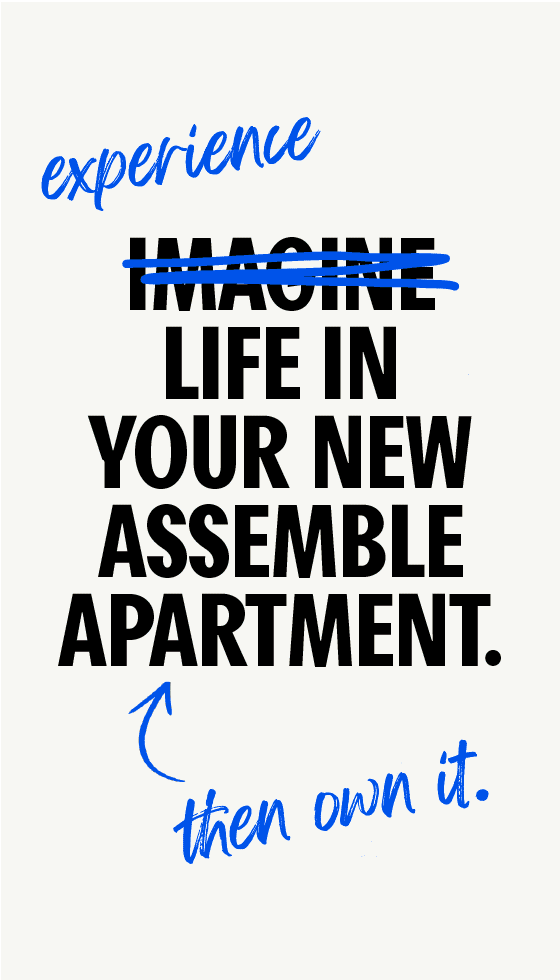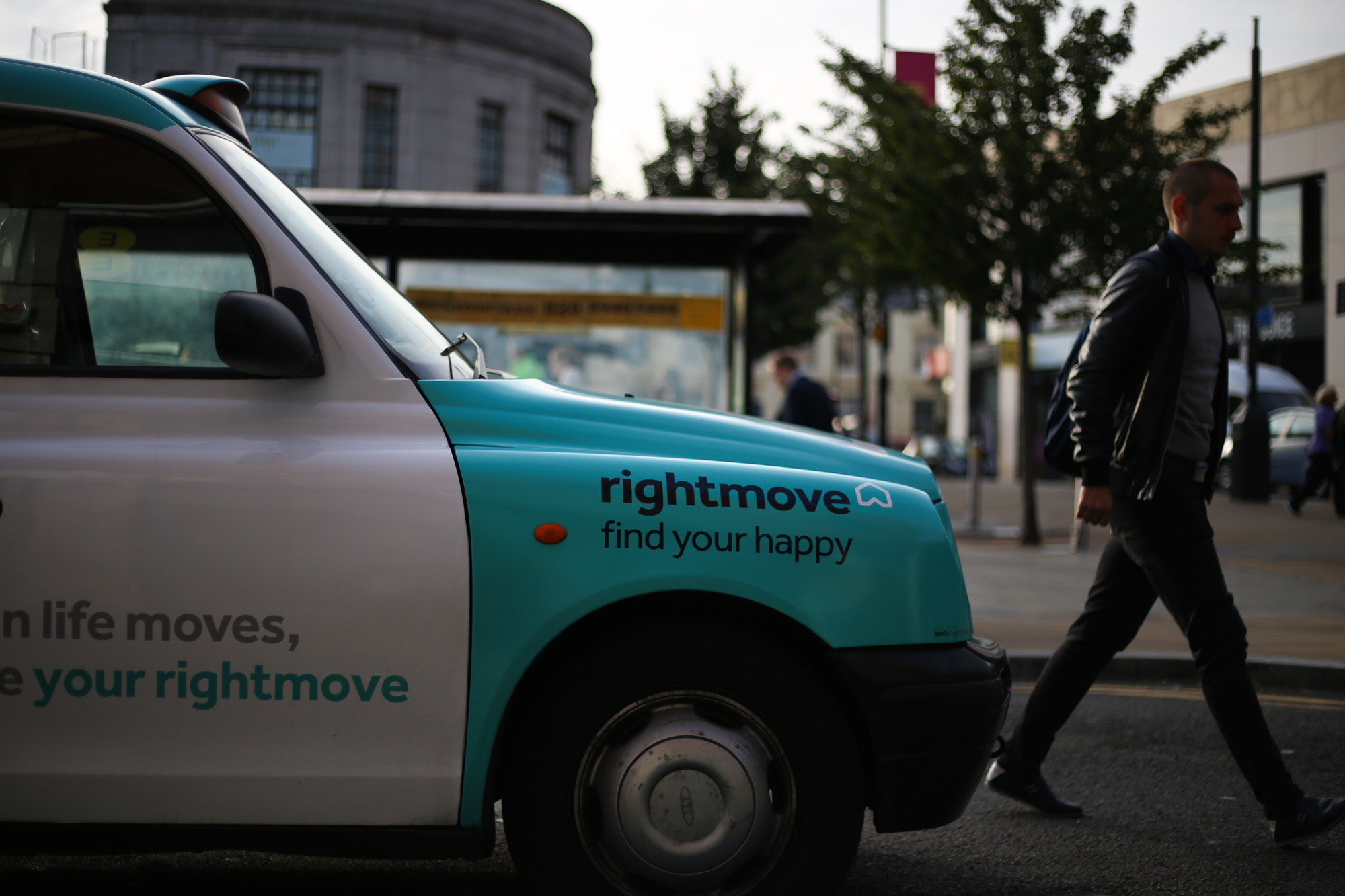Proptech is disrupting the way ‘Generation Rent’ live
Move over, Airbnb: here comes ‘proptech’. The new generation of apps goes beyond the dubiously-named ‘sharing economy’ to affect real estate in far more complex ways, from virtual bond deposits to micro-investing. Alexis Kalagas reports from London, where proptech is booming – together with the property market.
This year’s British summer was one of the hottest on record. In the depths of the London tube network, pressed up against grim-faced fellow passengers, peak-hour commutes brought to mind a subterranean sweat ritual. Crisscrossing the city in airless silence, the distraction of in-carriage ads became a fascination. The vast majority of underground ads were spruiking new apps or digital services – as expected, in Europe’s startup capital. Among the compound names and superfluous suffixes, one theme dominated: housing. Whether a landlord, renter, empty-nester, aspiring buyer or recent homeowner, it seems, there was a product or platform for you. Within the industry, the next generation of businesses looking to disrupt traditional real estate models goes by the inelegant portmanteau ‘proptech’. And in London in 2018, proptech is booming.
In many ways, ‘proptech’ is a loose, catch-all term. Even ignoring startups focused on office and retail space, or innovations in design and construction, the London scene alone encompasses everything from online financial vehicles to purchase micro-shares in real estate investment trusts (Bricklane), to algorithmic matchmaking platforms for potential roommates (Ideal Flatmate). It includes companies touting proprietary technologies to optimise landlord rental yields through short-term letting strategies on third-party platforms (Lavanda), and apps that allow users to create a ‘rent passport’, where regular rent payments build a personal credit history and open up the possibility of deposit-less leases (Canopy). Developers can invest in subscription services that aim to streamline the process of finding and assessing off-market land through integrated mapping and data software (Land Insight), and those looking to get on the property ladder can opt for a faster and – purportedly – cheaper mortgage via an online-only broker (Trussle).

The real estate industry is notoriously resistant to change. When proptech first emerged in the mid-2000s, it was with a singular focus: improving the search experience for residential property listings. The launch of Airbnb in 2009 marked a new kind of path-breaking business. Although instrumental in contributing to the rise of the sharing economy, the company was equally able to capitalise on a host of then-new technologies, including secure online payment platforms, smartphones and other GPS-enabled mobile devices, and a growing acceptance of review-based online trust features. Venture capital investment in the global proptech sector tripled in the three years to 2017, though it is yet to boom in Australia to the extent that it has in Europe and the United States. The recent explosion of startups has also piggybacked on innovations in the wider digital economy: AI/machine learning, peer-to-peer lending, big data, alternative trading systems, cloud computing, equity crowdfunding, smart buildings, blockchain, and virtual and augmented reality.
Something else was afoot a decade ago, when companies like Airbnb and Uber emerged to become the new darlings of Silicon Valley. At the time, technological advances dovetailed with widescale social disruption. It’s not a coincidence that these linchpins of the modern gig economy found a receptive market during the prolonged economic hangover following the 2008 financial crisis. In the same way, the rise of proptech globally can’t be divorced from more recent dynamics in the housing sector. Nowhere in Europe is the affordability crisis more acute than in London. Eighty-nine percent of London renters spend more than half of their disposable income on housing, usually considered a marker of ‘extreme’ stress. At the same time, it’s projected that 50 percent of millennials could be stuck in private rented accommodation into their forties. Thirty-year-olds in Britain are now half as likely to own a home compared to a generation ago, and four times less likely than baby boomers at a similar age.
Sensing opportunity in a charged climate, many London proptech startups are branding themselves as a direct response to the plight of ‘Generation Rent’. These companies fall into two broad groups. One has effectively spun out of the city’s world-leading financial technology (fintech) scene. These businesses are focused either on reducing transaction costs involved in the buying and selling of property, or lowering barriers to entry for those saving towards a deposit, by offering access to property–related investment products or collaborative savings and credit schemes. Instead of promising to smooth the pathways to home ownership, the existence of the other group implicitly acknowledges that the housing market has fundamentally shifted to a world where long-term renting is increasingly becoming the norm, rather than a transitional phase bridging the untroubled days of early adulthood.
In mid-July, I accompanied a friend to a weekly ‘speed flatmating’ event run by SpareRoom – Britain’s most popular flat-sharing platform – at a pub in Bethnal Green. Part speed dating, part supply-and-demand curve played out in real time, the popular gatherings have been a mainstay since the company’s launch in 2004. Now, however, they seem like a quaint relic of the pre-social media era. The aspiration of more recent startups, like MoveBubble, Ideal Flatmate, Homie, HomeRenter, Residently and Goodlord, has been to construct a seamless online rental experience that removes the need not only for physical paperwork, but also for physical interaction. Users can match with a potential flatmate, search for and rate available properties, chat directly with agents, take a virtual tour, make an offer, process references, generate rental contracts, transfer a deposit, sign a lease and arrange insurance – all without leaving the comforts of the app ecosystem.
“We’ve already seen technology transform other sectors,” says Alastair Parvin, CEO of Open System Labs. “It’s hard to believe it won’t transform our relationship with housing and land too. But it won’t happen if we simply bolt digital technology onto the same broken market.”
This may seem to fit with the common media trope that, as consumers, millennials expect on-demand and frictionless services at the tap of a touchscreen – whether ordering takeaway, hailing a ride or finding a partner. But the digitalisation of the rental process goes hand-in-hand with structural changes in the supply side of the rental market. The United Kingdom’s build-to-rent sector grew by 22 percent in 2017, seeing record-breaking investment of over $4 billion, the majority in London. Taking cues from the disruptive impact on office real estate by co-working companies like WeWork, the institutional interests behind many build-to-rent developments are embracing the model of ‘housing as a service’ in place of traditional landlord–tenant arrangements. Companies like Fizzy Living (‘reinventing renting’), Tipi (‘au revoir, lazy landlords’) and The Collective (‘for anyone, not for everyone’) offer features like flexible tenancies or memberships, 24/7 concierges, online resident services, shared amenities, and community programming.

Although appealing for those who can afford them, these bells and whistles distract from a more concrete shift: the ability to maintain relatively high rents while shrinking private living spaces. In part, this suggests how countercultural experiments in co-living have migrated from the margins to the (almost) mainstream. It also reflects shifting priorities, as a generation that has largely rejected the siren call of the suburbs ascribes increased value to the social dimension of higher-density urban living. But there is equally a process of diminished expectations at play. Tenants with a decade or more of cramped flat-share life under their belt have grown accustomed to informal and precarious versions of ‘co-living’, driven by economic necessity rather than lifestyle choices. In a broader sense, the question of whether the proptech sector will be successful in making long-term renting more palatable ignores the possibility for technology to contribute to systemic change.
At his leafy open-plan office in Hackney, I asked Alastair Parvin, CEO of the innovation non-profit, Open Systems Lab (formerly WikiHouse), about how digital tools could address housing affordability. “We’ve already seen technology transform other sectors,” he replied. “It’s hard to believe it won’t transform our relationship with housing and land too. But it won’t happen if we simply bolt digital technology onto the same broken market.”
“The only way to overcome London’s housing challenge is to think of new ways of delivering housing. Digital tools and more open data can level the playing field around land value and reduce speculation.”
Where were the most promising opportunities for innovation? “If I had to pick two, I would say land, and construction supply chains. Designing and developing a building is an expensive, opaque and risky process. We’re reliant on short-term speculators to do it for us. But we’re moving towards what you could call ‘on-demand’ development: so simple and low-risk that anyone can do it. This will unlock new kinds of long-term finance – money that invests in the performance of homes as places to live, not just as speculative assets underwritten by mortgage debt.”
I put a similar question to Euan Mills, future of planning lead at the Future Cities Catapult. Based in Clerkenwell, the organisation operates as an incubator of urban innovation prototypes, as well as liaising between research institutions, planning authorities, and the private sector. A key focus is ‘plantech’: new digital tools to support a more data-driven and citizen-centered planning system.
“At the root of the affordability issue is the value of land. One of the key factors defining value is planning policy, which establishes what you can build. The way we plan cities today is a relic of a bygone era. We rely on out-of-date data, laborious methods of analysis, and heavily-politicised decision-making.” He continued: “The only way to overcome London’s housing challenge is to think of new ways of delivering housing. Digital tools and more open data can level the playing field around land value and reduce speculation.”
The ‘Generation Rent’ universe is beginning to converge. In mid-August, Ideal Flatmate launched a dedicated portal for the build-to-rent sector. Matched with a fellow flat-hunter, users can ‘buddy up’ and be directed to rooms in new co-living developments. If proptech is contributing to a frictionless rental process, while the industry reorients around large commercial landlords, the focus on user experience skirts the bigger issue – that those users represent an increasingly captive market. Disruptive innovation is at the heart of the startup myth. But although the housing system pricing countless millennials out of ownership is ripe for rethinking, there seems to be little appetite for that challenge. Similarly, the proptech scene has yet to tackle the reasons why long-term renting is stigmatised in Britain, more so than other parts of Europe: short-term leases and regular rent hikes, which breed uncertainty and insecurity. It’s easy to automate agents out of existence, but reframing precarity as ‘flexibility’ is a harder sell.
This article draws on research Alexis Kalagas conducted as part of Harvard GSD’s Richard Rogers Fellowship program. A warm thank you to Alexis, our Europe correspondent. Many thanks also to Alex Lama for photos. A slightly different version of this article appears in AP#10: Housing – get your free copy at MPavilion and around Melbourne!









